FEATURES|COLUMNS|Ancient Dances
When Guanyin Jumps Off a Cliff
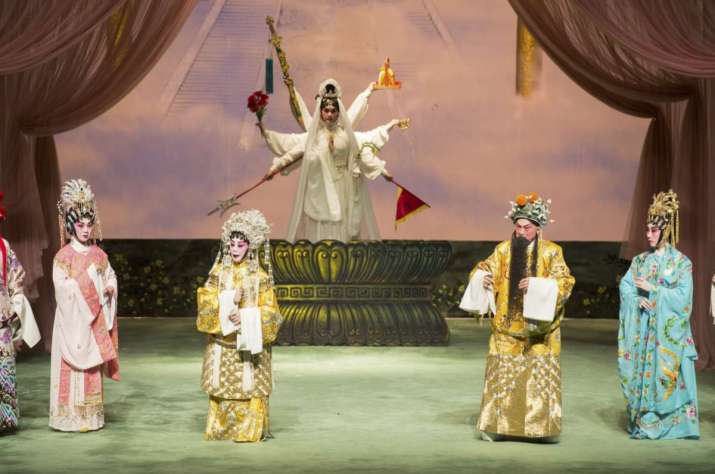 Princess Miu-Sin revealed as Guanyin, the Goddess of Mercy
Princess Miu-Sin revealed as Guanyin, the Goddess of MercyThe words fable and fabulous share the same root, the Latin word fabula, meaning story. Over time and use in the French and English languages, a fable has come to imply a number of things: charm, animals as characters, a moral, and amazing, hard-to-believe, fabulous feats and tales. Fables are also often folk variants on more orthodox stories of religion and history. It is no wonder, then, that fables become the source material for theater, and are better remembered than boring old historical facts or theologically sound explanations for divine occurrences.
Guanyin, the Goddess of Mercy—as the Indo-Tibetan bodhisattva of compassion Avalokitesvara is known in China—enters any story already gender-transformed. Avalokitesvara is male in Tibetan Buddhism, while Guanyin is female in Chinese Buddhism. One fable we won’t explore in this column insists that the original Avalokitesvara was a Nepalese hermaphrodite revered as a deity.
No matter, the fable at hand is a doozy; Guanyin jumps off a cliff.
I was most fortunate, through the kind actions of a friend, to be able to witness a sold-out presentation, “Celebrating the Reunification with Cantonese Opera Classics” in Hong Kong at the end of June, a day before the 20th anniversary of the United Kingdom’s handover of Hong Kong to China. Naturally, the cultural and political identity of Hong Kong is fluid and open to question and change in these times. Chinese opera is intensely regional, and there remain today many styles of this unique form of theater.
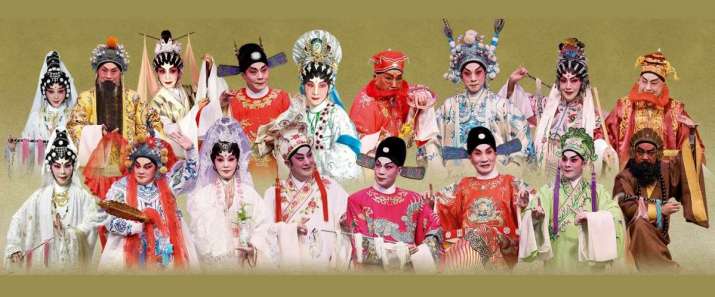 Stars of the Cantonese opera
Stars of the Cantonese operaIt is a credit to the strength of the ancient forms and how beloved they are, surviving through tumultuous times. Cantonese opera is one of the main styles in Southern China, and most associated with Hong Kong. A celebratory performance of Cantonese Opera is at once grand and very Chinese, at the same time associated with that most liberated aspect of China, the vibrant city of Hong Kong.
Some experts claim that Cantonese opera is dying. Granted, I saw these plays in a cavernous modern proscenium theater, not a made-to-purpose old, small Chinese opera theater requiring no microphones. This meant musicians in an orchestra pit and a very wide playing stage. Nevertheless, what I saw was generations of phenomenally talented performers with exceptional skills in singing and moving, sold-out performances, and thrilled audiences. Many old performance traditions would love to be “dying out” in such fashion. High quality in every respect, important traditions were kept vibrantly alive.
The performance was reasonably priced and included more than 200 performers enacting some of the most classic plays and scenes known to the tradition. The audience included many older people who clearly knew the plays well, knew when to clap, and delighted in the fact that they knew the ending of the play before it began. The conclusions were nevertheless immensely satisfying. These two plays were first performed together 50 years ago when they were brought into the repertory.
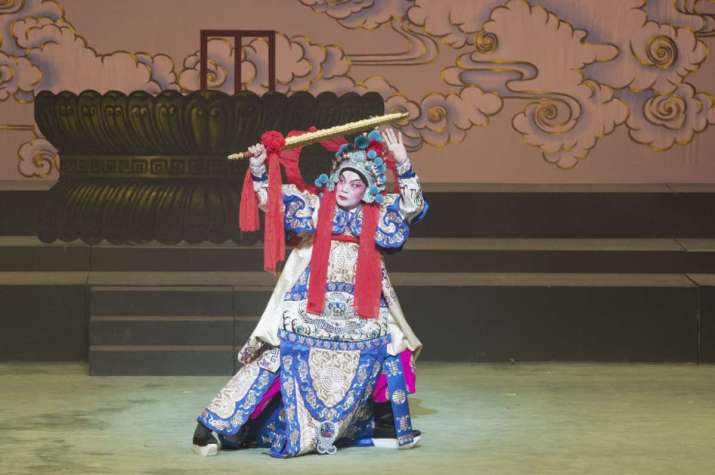 General Wai To
General Wai ToNot only have the Chinese opera art forms survived into the 21st century, but so have the Buddhist fables at their heart. The two plays on view when I attended were The Enlightenment of the Goddess of Mercy, and Grand Birthday Celebrations on Mount Heung-Fa, which depicts the immortals celebrating Guanyin’s birthday. Great stars of the last 50 years of opera performance were brought together for a spectacle rare to see.
Chinese traditional culture, complex and old as the dawn of time, is filled with fables about imposing martial figures, hidden hermits, eccentric spiritual masters, and magical, otherworldly excursions. Guanyin, a character already Sinicized, is of course Buddhist, but is also part of China’s grand pageant of miraculous immortals. After decades of official communism and atheism, Guanyin is as popular as ever. Chinese opera works best in any case if you already know the story.
When the immortals celebrate Guanyin’s birthday, they are the ancient Chinese immortals—some might call them Taoist, but perhaps more accurately they are Chinese popular deities of wealth, happiness, and protection. Not Buddhist in themselves, the assimilation of external deities and cultural memes into the broader Chinese cultural sensibility is a characteristic migration throughout all Chinese culture, and reflects a tendency to claim cultural symbols as a sign of conquest. Yet however these meta-trends might play out in these plays, the audience could not have been more delighted. This was an audience full of people who believe in Guanyin and have prayed to her all their lives.
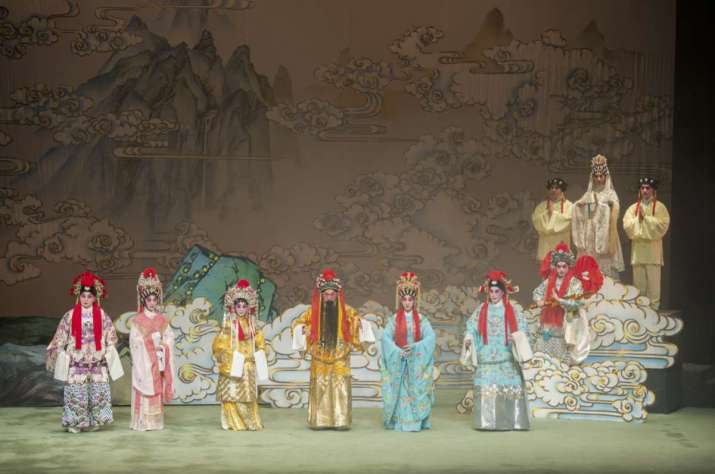 Guanyin among the immortals
Guanyin among the immortalsThe Enlightenment of the Goddess of Mercy is based on a popular fable, written down in the Yuan dynasty (1271–1368), about the Princess Miu-Sin, whose practice of Buddhism was so pure, she defied her father, the emperor, by refusing to marry the great general Wai To. After telling her father and suitor “no,” she escapes the palace and runs away. The Emperor orders General Wai To to follow, capture, and marry her, and if she is hiding in some Buddhist monastery or nunnery, to burn it down. And so the chase begins.
Princess Miu-Sin is welcomed by a nunnery, but they know who she is, fair and beautiful, and the nuns guess she will bring them nothing but trouble. The princess is told she can enter as a nun but only after successfully performing a series of impossible feats. In the first task, she must whittle a steel pole into a needle. My favorite part of the evening was when the great actress Chan Ho-Kau, who played the role in 1966, re-enacted this one scene as Miu-Sin, substituting for the main lead.
The iconic moment in this scene is when the princess picks up the steel pole and it is so heavy it nearly breaks her in half backwards. Chan Ho-kau had the audience spellbound with her acrobatic backbend and singing while upside down. Fabulous. You could see the depth and strength of her belief in the Buddha. Here was a great master of her art, Chan Ho-Kau in her 70s, convincingly portraying a young maiden in spiritual ardor. To be sure, with divine assistance, the princess successfully whittled the pole into a needle.
General Wai To is relentless in his pursuit and chases Princess Miu-Sin from nunnery to nunnery, finally finding her in a retreat hermitage where she is completing three years of meditation. He threatens to break down the door, and she escapes into the wild yet again, with the general in hot pursuit. Unable to go further, cornered by the general, Miu-Sin looks at him, then turns to run away and jumps off a cliff to her death! The audience is as shocked as the general. This was never the plan!
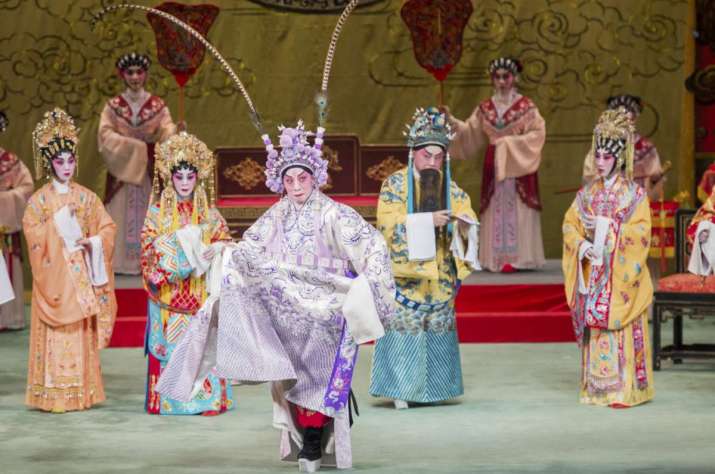 At the court of the emperor
At the court of the emperorMoments later, the sun rises over the mountaintop and begins to shine upon the entire scene. But it is not the sun, it is Miu-Sin transformed into Guanyin, the Goddess of Mercy, greater than any human trouble. I have never witnessed such a moment of astonishment, reverence, and joy in an audience as when Guanyin appears, rising over the mountain. The audience erupted into applause after a moment of disbelief, even though they have all heard this story a hundred times. It was a ravishing moment of theater. Would that all Buddhist deities receive such artistic treatment.
The fable of Princess Miu-Sin is one way the Chinese show their love for the Buddhist Goddess of Mercy, Guanyin. While the art is high, the skills complex, and the sensibilities archaic, the modern reception is sincere, heightened, even sweet. However improbable the story, we see the Goddess of Mercy in her true virtues, and there she shines, still, transcended to the Land of the Immortals.
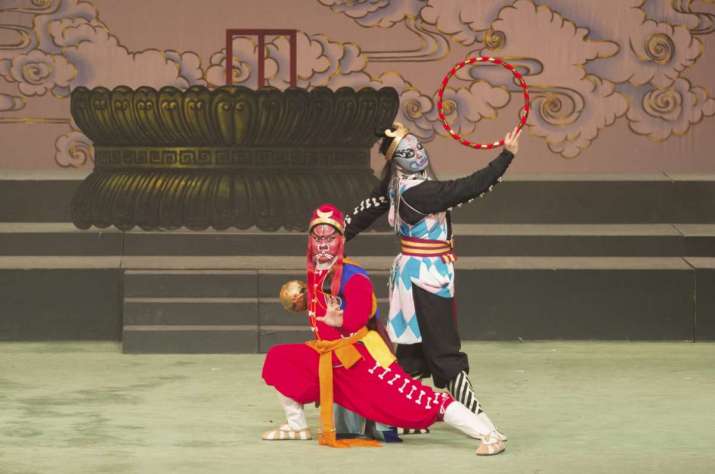 Buddhist arhats: dragon-subduing arhat, and tiger-taming arhat
Buddhist arhats: dragon-subduing arhat, and tiger-taming arhatAll images courtesy of the Cultural Presentations Department, Leisure and Cultural Services Department, Hong Kong.
Related features from Buddhistdoor Global
The Great Shravasti Buddhist Cultural Assembly
The Many Forms of Avalokiteshvara
Beauty and Sadness: Reflections on a Japanese Noh Play














